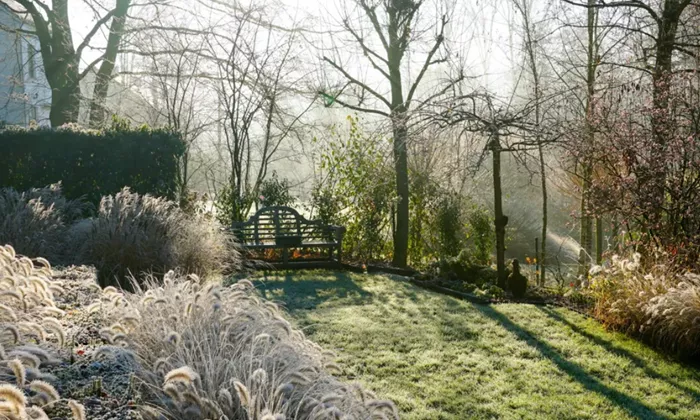As winter approaches, gardeners must prepare their plants for the harsh weather conditions that lie ahead. The term “overwintering” refers to the methods used to protect plants during the colder months. Neglecting to take these steps can harm your plants, and in some cases, may even lead to their death.
Understanding Overwintering
Overwintering is a crucial process for safeguarding plants against frost and extreme temperatures. Tammy Sons, a horticulturist and CEO of TN Nurseries, explains that this involves either protecting plants outdoors or bringing them indoors to shield them from freezing conditions, snow, and ice.
Different plants have varying needs during the winter, but with the right guidance, gardeners can effectively prepare their plants for the cold.
5 Steps to Overwinter Your Garden
The process of overwintering varies depending on the plant type, US hardiness zone, and local climate. Generally, preparation should begin in the fall. Whether tending to a container garden or a yard with fruit trees, here are five basic steps to help keep your plants healthy through winter.
1. Monitor Your Local Weather
To determine when to start overwintering, pay attention to your area’s first frost. This marks the time when plants are at risk from low temperatures that can damage their cells.
Drew Swainston, a former professional gardener and content editor at Homes & Gardens, advises that gardeners should begin preparations when nighttime temperatures start to drop. “Tender plants should be moved or protected before the first frost,” he says.
While there is no universal temperature threshold, it’s generally best not to leave plants exposed to cold when nighttime temperatures fall to around 55°F. Researching the specific temperature tolerances for your plants can help you act accordingly.
2. Inspect Plants Before Bringing Them Indoors
If you plan to bring potted plants inside, it’s essential to check them for pests first. Kathi Rodgers, CEO of Oak Hill Homestead, emphasizes the importance of inspecting both the leaves and undersides for insects.
For minor pest problems, a strong blast of water can help dislodge unwanted insects. However, if pests are more pervasive, consider using targeted treatments for issues like aphids or spider mites.
This is also a good time to prune away any dead or damaged branches. Proper pruning tools can make this task easier, but avoid common mistakes that could stress the plants.
3. Move Potted Plants to a Sheltered Location
Once your plants are in good shape, it’s time to move them indoors. Kathi suggests that tender herbs and plants can be transplanted into containers and kept in the house, greenhouse, or an unheated garage.
Choosing the right location is key to keeping the plants warm and protected from cold winds. Drew recommends placing them in frost-free areas, such as a porch or conservatory. In milder climates, positioning plants near walls or fences can also provide additional protection.
If using a greenhouse, avoid heating it during the winter to prevent wilting from excessive warmth. Allow indoor plants time to acclimatize to lower light levels by placing them in shadier spots for a week or two before moving them to their final indoor location.
4. Mulch Plants to Protect Roots
For plants that cannot be easily brought indoors, take extra precautions to protect their roots from freezing. Kathi advises covering the soil around perennials with several inches of mulch.
Mulching is a straightforward task that can be done with various materials, including store-bought mulch, wood chips, or even fallen leaves. A layer of mulch acts as insulation for the roots, helping to prevent winter damage.
This is also a great time to enrich your soil. Kathi suggests adding a layer of compost to boost nutrients and organic matter, preparing your garden for spring growth.
5. Cover Plants to Prevent Frost Damage
In addition to mulching, it’s crucial to protect the foliage of tender plants from frost. Consider using frost cloths or even bed sheets to cover vulnerable plants, including vegetables and fruit trees.
For potted plants that remain outdoors, cover them and wrap their pots in burlap or cloth for extra insulation. Smaller plants and seedlings can also be moved to cold frames for added protection against frost.
By following these essential overwintering steps, gardeners can ensure their plants survive the winter and thrive in the warmer months ahead.
Related topics:
- Why Spider Plants Are the Ideal Houseplant for Beginners
- Oklahoma’s Fall Native Plant Festival Highlights Wildlife Impact
- Karvi and the Spaniard: The Enigmatic Flower and the Man Who Sought to Understand It


